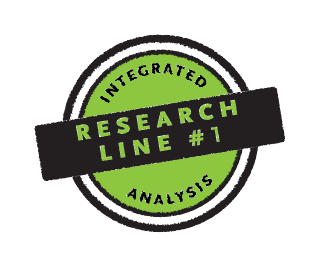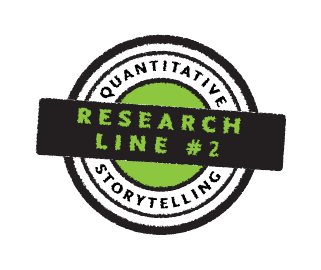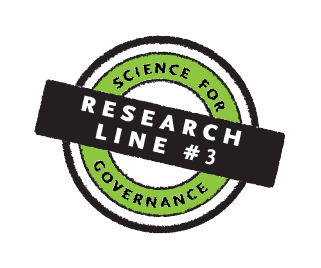Research Lines
We are IASTE, a consolidated research group (GRC) recognized and funded by the Government of Catalonia (2017 SGR 230; 2014 SGR 00140; 2009 SGR 0594) and hosted by the Institute of Environmental Science and Technology (ICTA) of the Universitat Autònoma de Barcelona.
Our work focuses on how to produce and use scientific information in a way helping society to make better-informed decisions in the sustainability domain. Central to our research is the development of a transdisciplinary approach—Multi-scale Integrated Analysis of Societal and Ecosystem Metabolism (MuSIASEM). MuSIASEM enables the use of integrated sets of biophysical indicators that can be chosen “à la carte” by social actors in relation to multiple criteria of performance.
Our work is organized along three lines of research, which have respective goals of improving the quality of analytical tools, improving the quality and the diversity of the insights about sustainability issues through knowledge coproduction, and improving the quality of the processes used to produce and use quantitative information in decision making. The three lines are explained in detail below.

ANALYSIS
Integrated Analysis of Complex Systems for Issues of Sustainability
By using a complexity term of reference we have developed an innovative approach to quantitative analysis in sustainability science—the Multi-scale Integrated Analysis of Societal and Ecosystem Metabolism (MuSIASEM) accounting framework. MuSIASEM has proved useful in identifying and characterizing, across different dimensions and levels of analysis, the factors determining the sustainability of the interaction of the technosphere (the set of activities determined by human control) and the biosphere (the set of activities expressed and regulated by natural processes).
MuSIASEM is based on the combination of four conceptual frameworks
- the state-pressure relation as defined in non-equilibrium thermodynamics (Prigogine);
- the flow-fund model proposed by Georgescu-Roegen to study the biophysical roots of the economic process;
- relational biology as developed by Rosen to study the organizational pattern of complex adaptive systems; and
- hierarchy theory allowing the identification and the characterization of the relation between functional and structural elements.
Further, MuSIASEM
- preserves coherence in the quantitative description of the metabolic pattern of social-ecological systems when interfacing non-equivalent descriptive domains;
- handles the existence of impredicativity across scales; and
- provides transparency in relation to the semantic choice of the accounting categories needed to integrate the use of non-equivalent metrics and the choice of data sources for populating the accounting scheme.
For a more detailed introduction to our integrated analysis work, readers are encouraged to peruse the MAGIC project’s D4.4 Nexus Structuring Space, which itself links to several journal publications, for example Cabello et al. (2019), Cadillo-Benalcazar et al. (2020), Renner et al. (2020) and Serrano-Tovar et al. (2019). Note that a searchable list of recent publications from IASTE is made available on this website’s publications page.

STORYTELLING
Quantitative Storytelling
Quantitative storytelling (QST) has been developed within the broader post-normal science discourse, which advocates the replacement of the ambiguous concept of “scientific evidence” with more semantically open approaches. The rigor implied in the notion of scientific evidence relies on a pre-analytical endorsement of a given framing that prevents the proverbial “thinking outside the box” further along in the process. QST, in contrast, considers different framings of nexus issues in relation to different concerns, hopes and the various relevant scales and dimensions of analysis. This consideration offers a way of escaping the confines implied by any single framing.
Using the integrated structuring of the complex information space generated by the MuSIASEM toolkit, with QST, it becomes possible to carry out informed deliberation over the quality of the choice of
- the quality of the original framing (justification narrative), i.e. why a given policy is needed;
- the plausibility of the chosen policy solution/innovation (normative narrative) through an analysis of its feasibility (external constraints), viability (internal constraints), openness (security & externalization) and desirability (in relation to values and fairness), i.e. what type of policy should be implemented; and
- the robustness of the explanation narratives that were used to answer these questions, i.e. how do we know that the policy is plausible and desirable—are there relevant pieces of information missing?
QST has proved extremely useful in addressing the integrated analysis of the entanglement of the different aspects of the WEFE resource NEXUS (water, energy, food, environment). Over the past 5 years, IASTE has published extensively on the topic, covering a variety of topics including renewable electricity (Renner & Giampietro, 2020), electric cars (Di Felice et al., 2021), biofuels (Cadillo-Benalcazar et al., 2021), circular economy (Giampietro, 2019) and aquaculture (Cadillo-Benalcazar et al., 2020). As before, a searchable list including full bibliographic information for these publications and others is made available on this website’s publications page.

GOVERNANCE
Tools and Procedures for Science for Governance
The implementation of the ideas of post-normal science presupposes the formation of an “extended peer community”. Indeed, when deliberating over policies, society as a whole should be involved in an informed discussion about the three narrative types (justification, normative and explanation) mentioned in the above quantitative storytelling research line. This requires the ability to engage the various relevant social actors in such a discussion. For this task, it is essential to develop effective procedures and pertinent tools (e.g. decision support) for participatory integrated assessment.
To this purpose, and closely linked to the deployment of MuSIASEM and quantitative storytelling for exploring the implications of the resource nexus, our group has been working on
- innovative decision support systems that use
- visualization methods capable of characterizing simultaneously the effects of different simulations in relation to different definitions of performance combining non-equivalent descriptive domains; and
- sets of impredicative relations allowing to keep coherence in information spaces made up of data expressed using non-equivalent metrics; and
- the use of internet and media to generate interactive knowledge hubs (e.g. the Uncomfortable Knowledge Hub) and opportunities for discussions and information on hot topics related to sustainability.